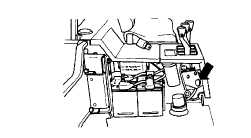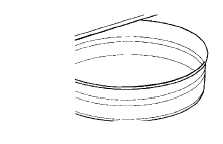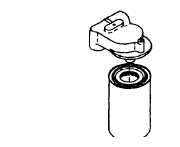| |
TM 10-3930-671-24
METHOD 2 - Fluid Change
NOTE
If old oil is excessively dirty or
hydraulic system contaminated, refer
to METHOD 1 procedures for draining
and flushing tank.
1.
Locate the hydraulic system pressure diagnostic
check port.
2.
Remove the snap-on cap and connect a suitable
drain hose line to the diagnostic check port. Use
quick-disconnect adapter fitting, Clark Part No.
3797029.
NOTE
You will need a drain pan of 5.5 gal
minimum capacity, or other method
of disposal, for collecting the used
oil. Be sure the outlet end of the
drain line is directed into the pan and
held from moving when pressurized.
3.
With direction control in NEUTRAL, start the
engine and let it run at idle speed to operate the
main hydraulic pump. Do not accelerate engine
speed. A steady stream of used oil should flow
from the drain line.
4.
Continue operation until sump tank is emptied.
This point will be reached when the pump starts
to cavitate. When cavitation occurs you will
notice a change in the sound of the pump. Also,
watch the drain line. The oil flow will become
erratic or will stop when the pump can no longer
pick up oil from the sump tank.
CAUTION
Be careful when sump is nearly
emptied. Watch for signs of pump
cavitation. Do not operate pump after
cavitation
occurs
or
damage
to
equipment may occur.
5.
Stop the engine. Turn key switch OFF as soon
as pump cavitation is noted.
6.
Disconnect drain hose from the truck. Replace
cap on the hydraulic pressure check port fitting.
7.
Remove and discard used oil filter. Install a new
hydraulic oil filter.
8.
Remove the used sump tank fill cap/breather.
F-452
|







